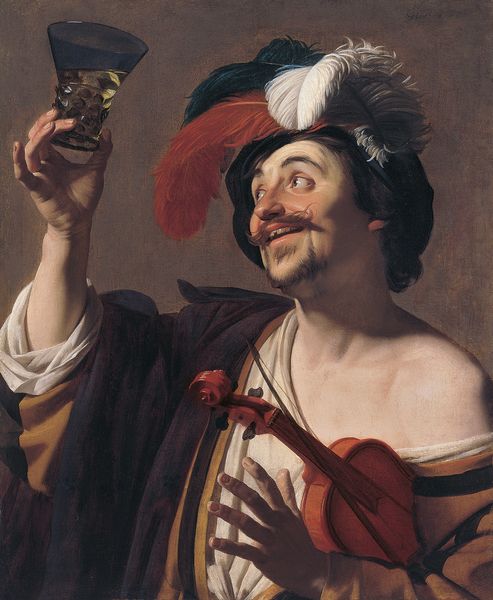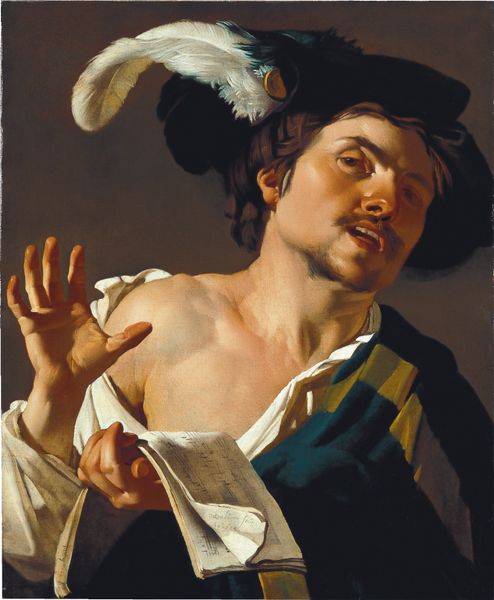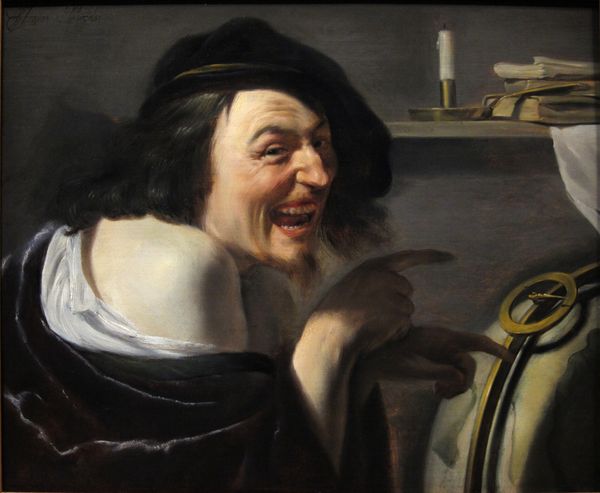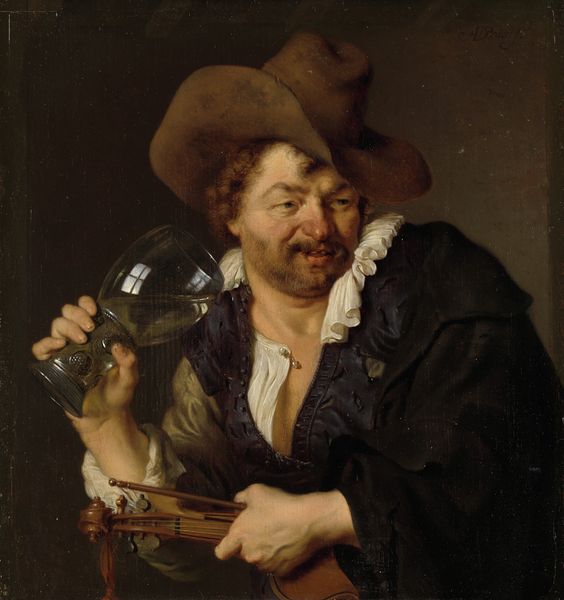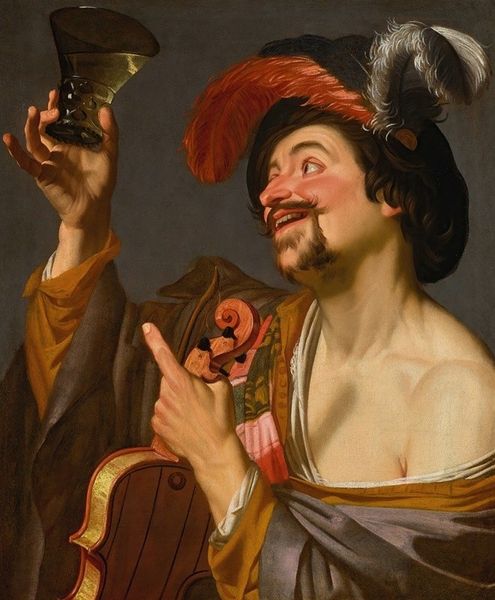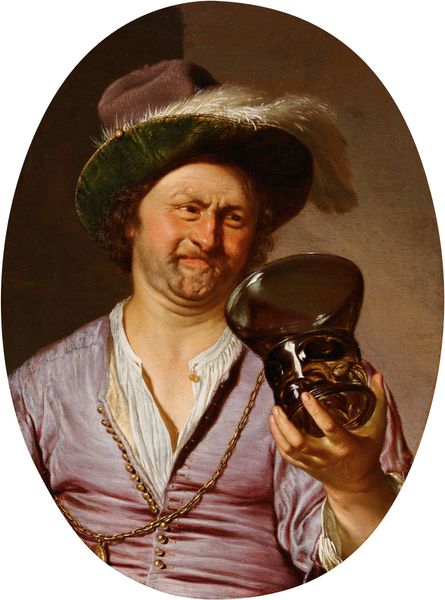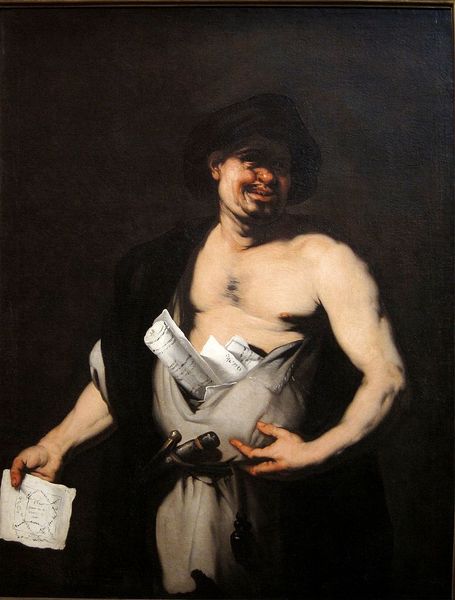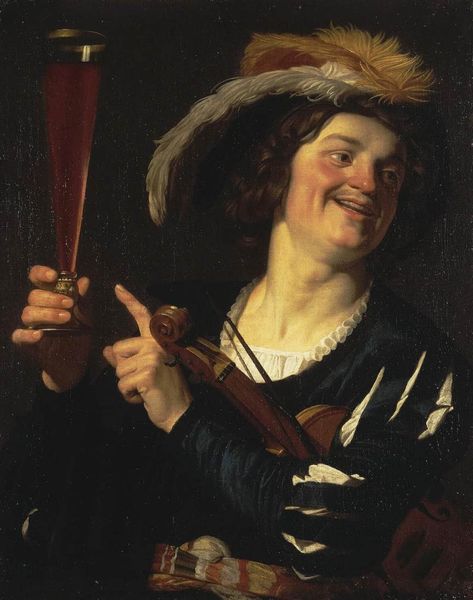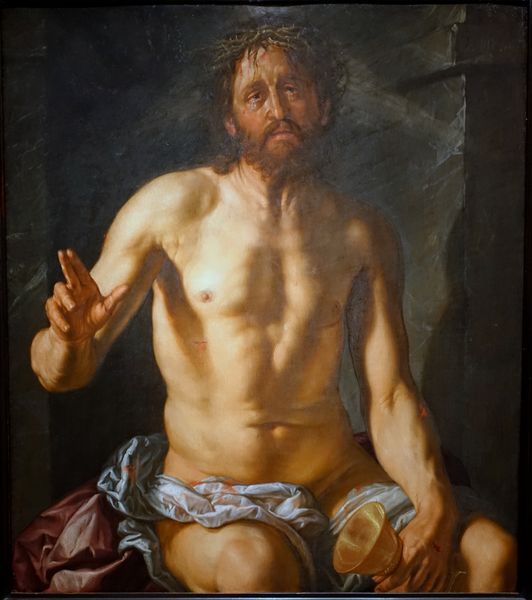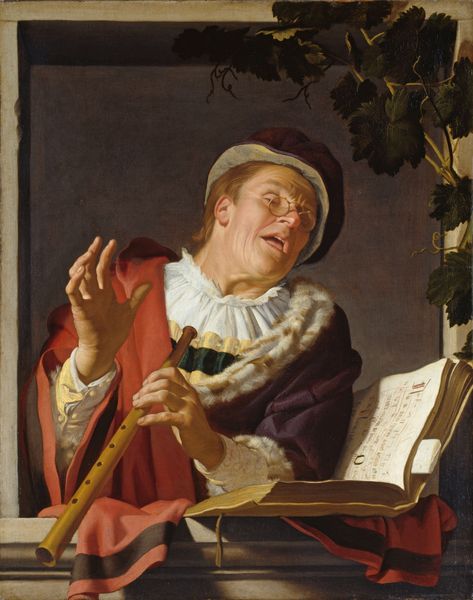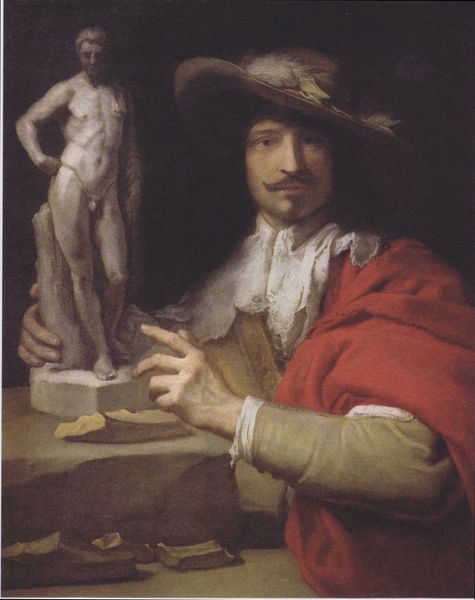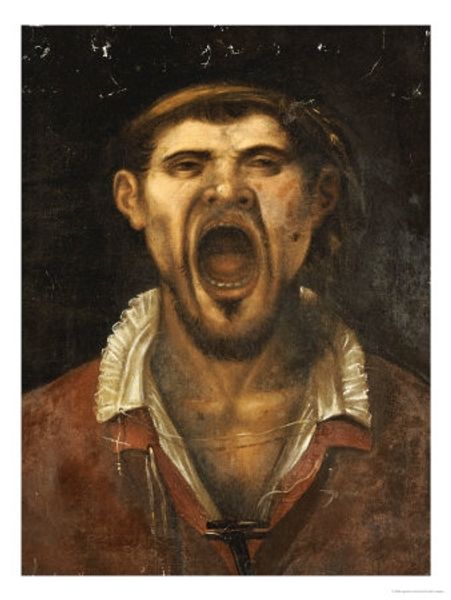
painting, oil-paint
#
portrait
#
allegory
#
baroque
#
painting
#
oil-paint
#
figuration
#
history-painting
Dimensions: support height 85.7 cm, support width 70 cm
Copyright: Rijks Museum: Open Domain
Hendrick ter Brugghen painted this oil on canvas depicting "Democritus" at an unknown date. Ter Brugghen's painting offers a window into the intellectual and social currents of the Dutch Golden Age. The figure of Democritus, the laughing philosopher, embodies a skepticism towards the world's follies. This theme resonated deeply in a society undergoing rapid commercial expansion, religious reformation, and the birth of modern science. Painted in the Dutch Republic, the artwork can be interpreted in the light of the new institutions of science and learning, as well as the growth of mercantile capitalism. Brugghen’s interest in Democritus reflects the artist’s possible critique of the institutions of his day, which were undergoing great change. Historians can shed light on the ways in which cultural and institutional forces shaped the artist’s creative choices. To better understand the work, we can examine historical documents, philosophical treatises, and visual culture of the time. This brings us closer to grasping the artwork’s meaning as a product of its unique historical context.
Comments
rijksmuseum about 2 years ago
⋮
The Greek philosophers Democritus and Heraclitus were considered to be polar opposites. In contrast to the old, melancholy Heraclitus (the nearby pendant), Democritus appears as a young, laughing hedonist. He points to the distance, as though that is where the folly of mankind is found. Together, the pair of paintings conveys a moralizing message: whether you laugh or cry, the world remains incurably foolish.
Join the conversation
Join millions of artists and users on Artera today and experience the ultimate creative platform.
